The printing industry is one of the biggest sectors with multi-layered units and operators. The machine required to print on paper differs from fabric or canvas printing. So, while we acknowledge the uniqueness of the printing industry, our focus will be on T-shirt heat press and screen printing.
What makes t-shirt heat press different from screen printing, and which is the better option in the great t-shirt heat press vs screen printing debate? We’ll answer these questions and more as you keep reading.
Part 1: Difference between Screen Printing and Heat Press
Over the years, there has always been an unending argument on the best printing model for a garment. For some people, a T-shirt heat press is the best option, and for some, screen printing is a better option. Before going further, we must understand the difference between screen printing and heat press to grasp what makes them unique and help you make an informed decision when choosing between the printing methods.
1. Screen printing
Screen printing, also known as silk screen printing, is a printing method that involves the use of a mesh stencil to transfer ink onto a surface. The stencil is made by blocking off certain areas of the mesh with a non-permeable material, leaving only the desired image exposed. The ink is then forced through the mesh and onto the surface using a squeegee.
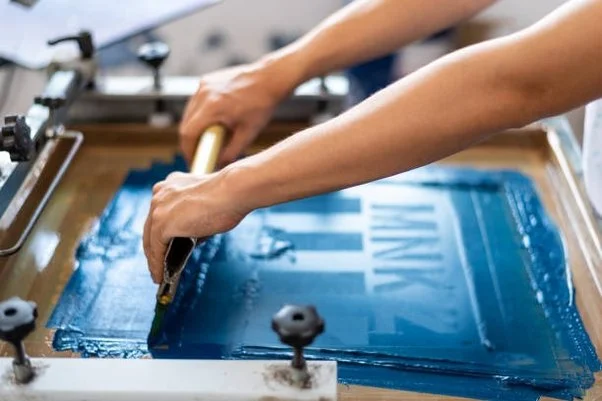
How does Screen printing work?
Custom screen printing employs a fine screen mesh to create a stencil. When the stencil is created, the printer will have to pour the ink into the mesh. The ink will be spread on the screen, and because of the structural design of the screen printing machine, the ink will pass through the mesh, where it will make contact with the underlying fabric or garment the printer wants to print upon.
Now, because of the delicate nature of the screen printing machine, the printer can only print one color at a time. So, in a situation where multiple colors will be printed, the printer will have to create multiple screens that reflect the colors he plans on printing.
Once the first color has been printed on the fabric, there is always a printing stoppage time. The essence of this interlude is to allow the color to dry before moving on to printing the next colors on the fabric.
Pros:
- Screen printing is great for high-volume printing as it is fast and efficient.
- The ink used in screen printing is long-lasting and durable.
- Versatile – works on various fabric types and surfaces.
- Screen printing allows for a high level of detail and precision in the design.
- Cost-effective for large orders.
Cons:
- Requires a separate screen for each color in the design, making it less cost-effective for designs with many colors.
- Not suitable for small orders or designs with complex gradients.
- Not ideal for fabrics with a high thread count, as the ink may not adhere properly.
- The process can be messy and requires specialized equipment and facilities.
- Not environmentally friendly due to the use of chemicals in the process.
2. Heat press
Heat press transfer is a method of transferring a design or image onto a substrate, such as fabric, using heat and pressure.
Heat press transfers are commonly used in the production of custom apparel, such as t-shirts, hats, and bags. They are also used in the production of promotional products, such as mugs, keychains, and mouse pads.
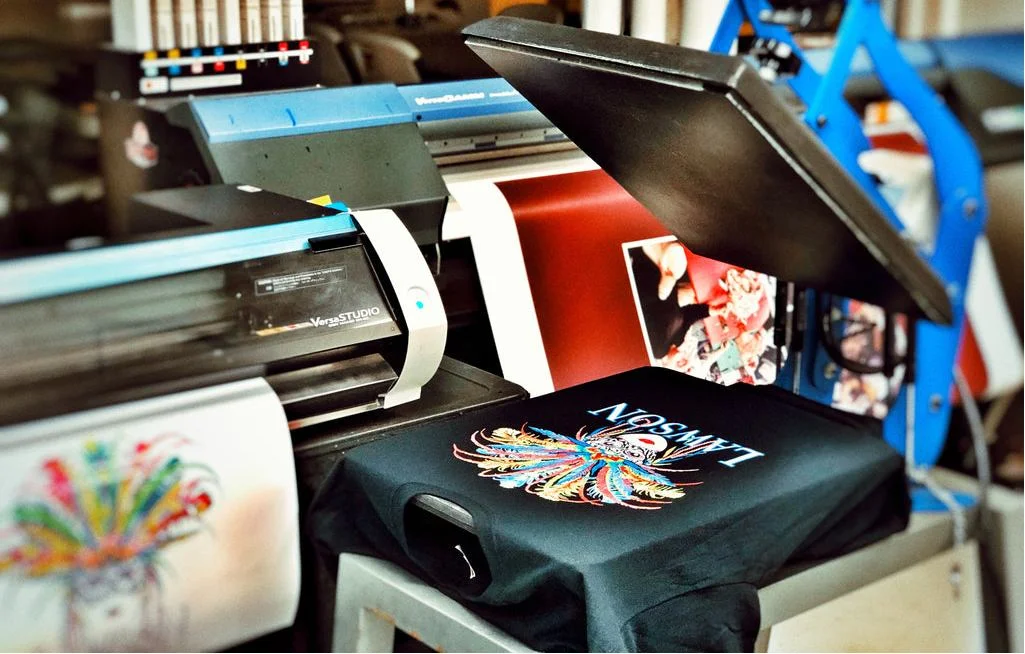
How does it work?
To use a heat press, the design is first printed onto a transfer paper using a special ink. The transfer paper is then placed onto the fabric or garment and held in place with the heat press. The heat press applies heat and pressure, causing the ink to transfer from the paper onto the fabric or garment.
Pros:
- Ideal for small orders or individual items as it is quick and easy to set up.
- Heat press is great for designs with complex gradients or small details that may be difficult to achieve with screen printing.
- Cost-effective for small orders or individual items.
- It can be used on a wide range of fabrics and materials, including cotton, polyester, and nylon.
- Clean and environmentally friendly
Cons:
- Designs may not be as durable as screen printing designs.
- Not suitable for high-volume printing as it can be time-consuming and labor-intensive.
- Not suitable for high thread count fabrics as the ink may not adhere.
Part 2: Screen Printing vs Heat Press – Which is better and How to Choose?
There is no clear-cut answer to this question because both techniques have their advantages and disadvantages, and the choice between the two depends on various factors. Here are some things to consider when choosing between screen printing and heat press:
- Quality: In terms of quality, screen printing is considered superior to heat press. Screen printing produces sharper and more vibrant prints that are more durable and long-lasting than heat press prints. However, the quality of the print also depends on the type of fabric or material being printed.
- Quantity: If you need to print a large number of items, screen printing is usually more cost-effective than heat press. Screen printing can produce hundreds or even thousands of prints in a short amount of time, while heat press is better suited for smaller runs or one-off prints.
- Design complexity: Screen printing is better suited for designs with multiple colors and intricate details. Heat press is best for simple designs with one or two colors.
- Cost: Heat press machines are generally less expensive than screen printing equipment, making them a good option for small businesses or individuals who don’t need to print in large quantities.
- Time: Heat press is faster than screen printing, as it can produce a print in a matter of minutes, while screen printing takes longer to set up and produce.
- Fabric type: Heat press is better suited for synthetic fabrics, while screen printing is better for natural fibers like cotton or linen.
Although both screen printing and heat transfers provide ways to transfer a design onto a t-shirt or other item, they each have unique advantages. For instance, if you need to print customized designs with different names, heat transfers could be the most economical choice.
However, if you need to produce a large quantity of the same design and require a durable print, screen printing is likely the optimal option. Ultimately, the decision should be based on your specific needs and preferences.
Part 3: The best Heat Press Machine – VEVOR Heat Press Machine 2In1 15x15in Sublimation Print Transfer
Heat transfer printing can sometimes be difficult to achieve, especially when working with a machine with an unreliable motherboard.
However, when you carry out your heat transfer printing using the VEVOR heat press machine 15×15 inch machine, you get to work with a heat transfer machine designed with a reliable motherboard. Another takeaway from using this machine is that you are in firm control of measuring the temperature level because it has an accurate temperature level measurement.
Still not convinced? Here are some key features of the VEVOR heat press machine and why you need one to have a blissful heat transfer printing experience.
360° SWING AWAY DESIGN
One of the advantages of the 360 swing-away design of the VEVOR multifunctional heat press machine 15×15 is that it reduces the chances of creating accidental contact during or after pressing.
Also, you can easily move the top plate away to create space after pressing. In addition, the 360° swing away arms help the machine apply pressure evenly and directly on the sublimation machine without any distortion.
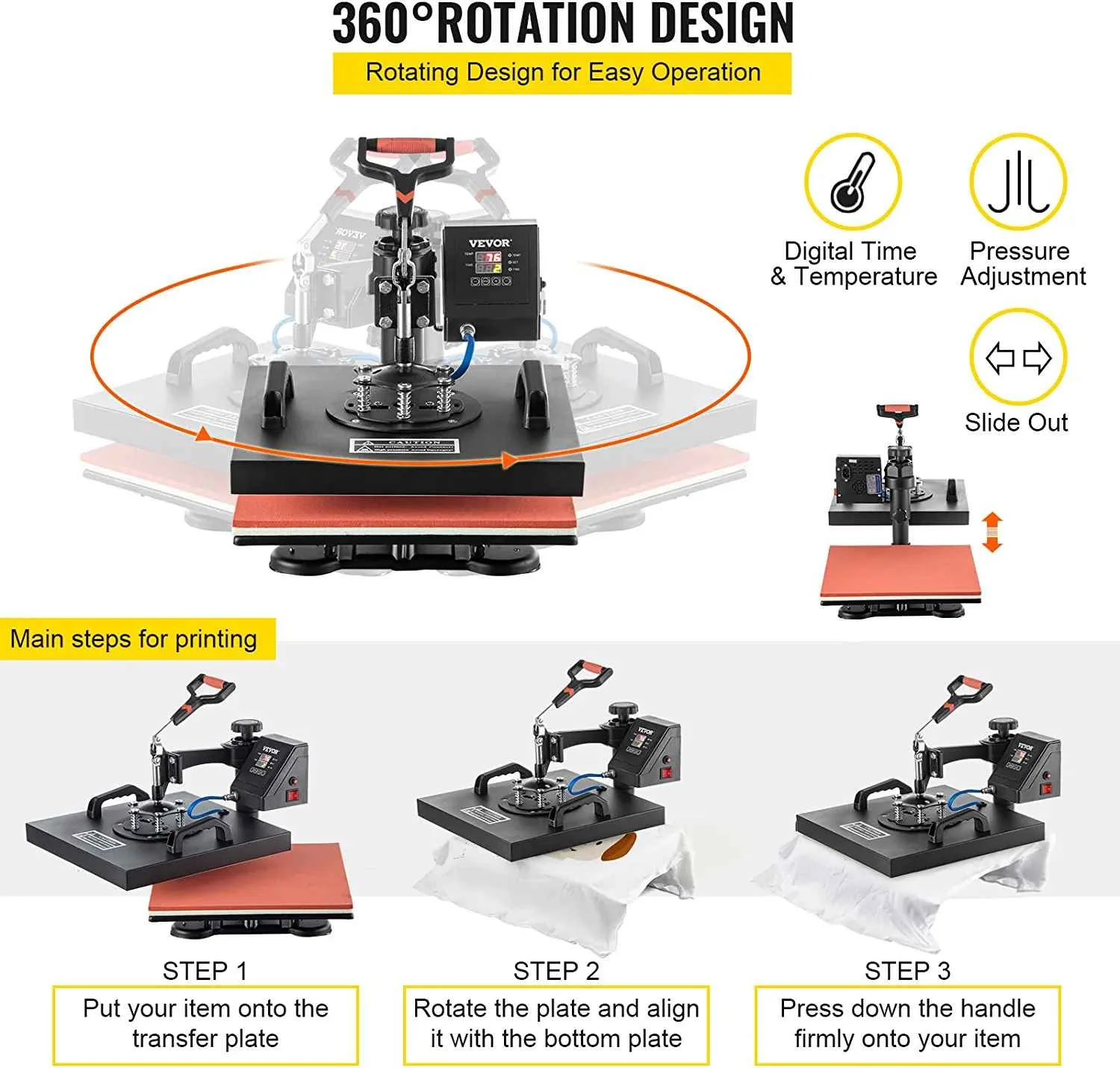
DIGITAL CONTROL & DISPLAY
Gone are the days when users were boxed into using manually controlled heat transfer machines. The VEVOR multifunctional heat press machine 15×15 is designed with a digitalized control display board that allows users to easily understand the machine’s operation. With well-designed silicone screen buttons, users enjoy the comfortable soft touching screen without commotion.
SECURITY PERFORMANCE

Heat transfer machines need the heat level to be charged up to perform optimally. But on the other hand, a heat level that is out of control can be an Achilles heel for both the machine and its operator.
So, to ensure safety, the VEVOR multifunctional heat press machine 15×15 is designed with an insulator that ensures the machine’s heat level is kept at bay at all times. The VEVOR inbuilt insulator technology helps the machine maintain 50 to 70-degree surface temperature when the working temperature reaches 210 degrees Celsius.
8-IN-1 ERSATILE KIT
If you are looking for a machine that is big enough to accommodate different printing sizes, VEVOR multifunctional heat press machine 15×15 stands out. The 15 x 15 large heat plate size is equivalent to 38 x 38 cm, making it suitable for printing numbers, patterns, and letters on various items like plates, aluminum pots, caps, and T-shirts.
DUAL-TUBE HEATING
You don’t want to miscalculate the heat level between the center and the edge when it comes to heat transfer printing. For instance, old and traditional heat transfer machines have heat level differences between the center and the edge that can sometimes exceed 100oC.
However, the VEVOR multifunctional heat press machine 15×15 is designed with an advanced system known as double heating technology. This feature enables the heat transfer machine to have a temperature difference of 50oC between the center and the edge compared to the 100oC obtainable from the old-fashioned heat transfer machine.
Part 4: FAQ about Screen Printing and Heat Press
1. Which is more durable, heat press or screen printing?
Screen printing is generally more durable than heat press, as the ink is pressed into the fabric or substrate rather than applied to the surface. Screen printing is also less likely to peel or fade over time.
2. Which is better for printing on different types of substrates, heat press or screen printing?
Heat press is better for printing on a wider variety of substrates, including fabrics, ceramics, metals, and plastics. Screen printing is generally better for printing on fabrics and paper.
3. Which produces higher quality prints, heat press or screen printing?
Both heat press and screen printing can produce high-quality prints, but the outcome depends on the substrate and design. Heat press allows for greater detail and vibrancy in colors, while screen printing offers greater durability and longevity.
4. Which is easier to learn, heat press or screen printing?
Heat press is generally easier to learn and requires less technical skill than screen printing. Heat press involves simply setting the machine temperature and pressure, while screen printing requires more setup and technical knowledge.
5. Can heat press and screen printing be used together?
Yes, heat press and screen printing can be used together in a process called “mixed media printing.” This involves using screen printing for the base design and then using a heat press to add additional details or customizations.
Conclusion
T-shirt heat press and screen printing are unique and can be used to print various items. However, when it comes to printing on odd items, cost incentives, and handling large printing projects, especially garments and fabrics, we recommend choosing a t-shirt heat press. Another plus that gives the t-shirt heat press an edge over screen printing is that t-shirt heat press machines are easy to use, especially when using new technology like the VEVOR multifunctional heat press machine 15×15.

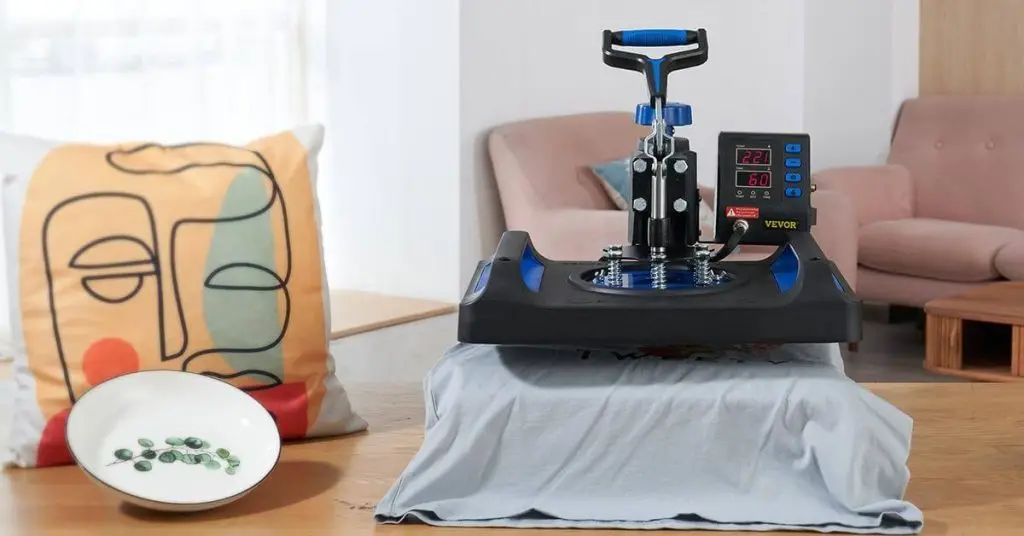
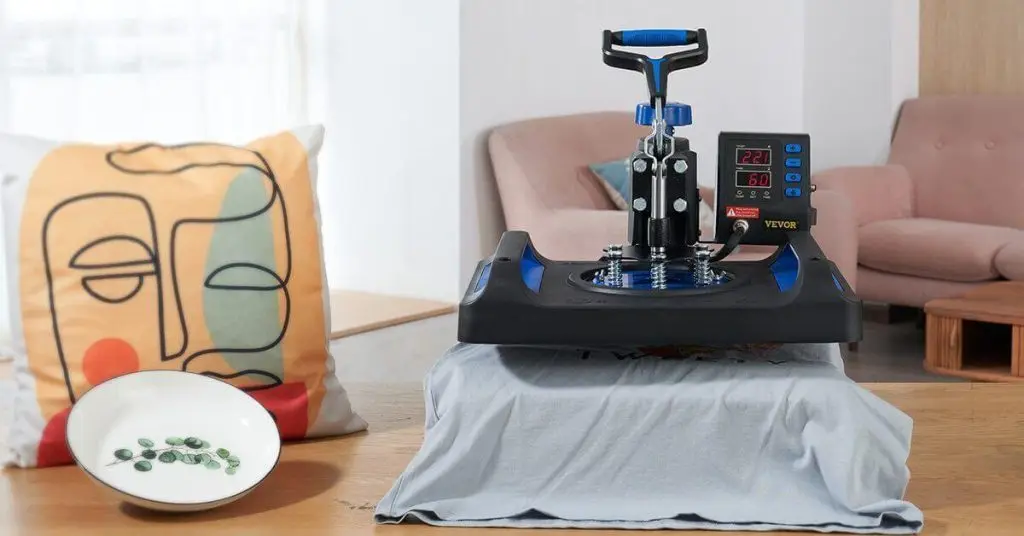

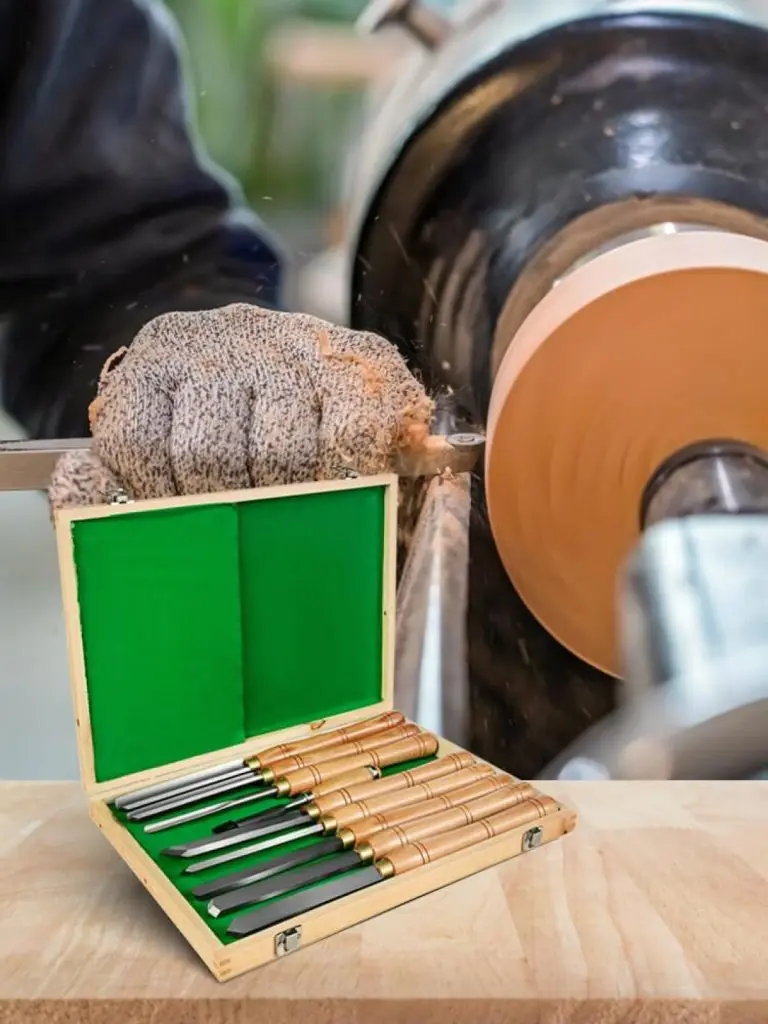
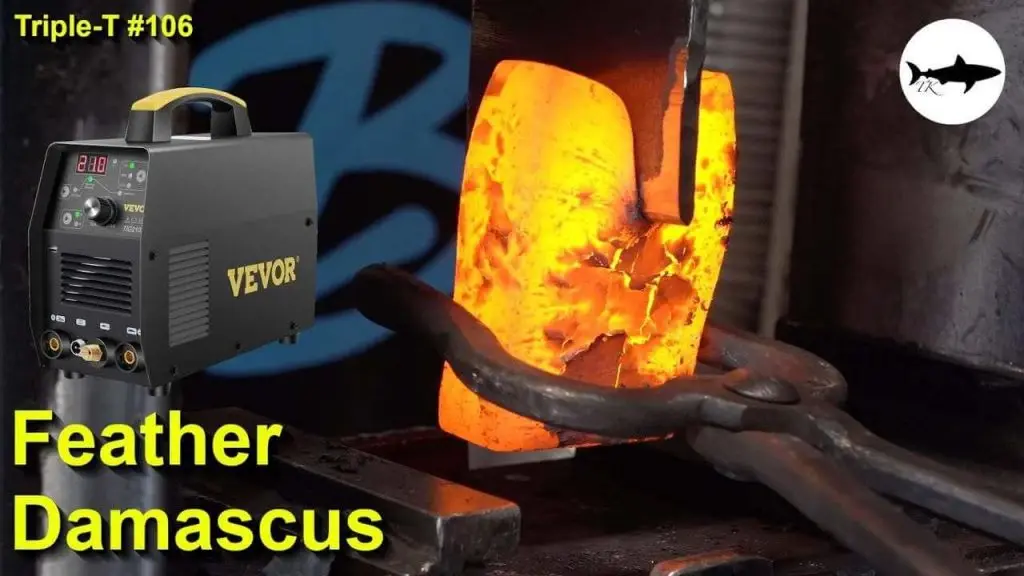
 Arabic
Arabic Danish
Danish Dutch
Dutch English
English Finnish
Finnish French
French German
German Greek
Greek Hebrew
Hebrew Hungarian
Hungarian Italian
Italian Norwegian
Norwegian Polish
Polish Portuguese
Portuguese Romanian
Romanian Russian
Russian Slovak
Slovak Spanish
Spanish Swedish
Swedish